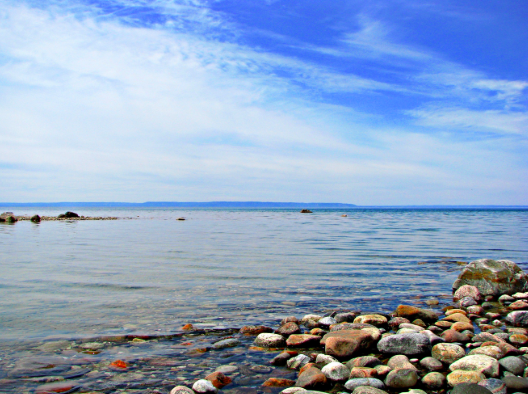Collingwood, Ontario is a beautiful town in Simcoe County. Just a two-hour drive from Toronto, Collingwood is a welcoming community, boasting an interesting and historically significant past. Located along Nottawasaga and Georgian Bay, Collingwood’s unique location means its been inhabited for centuries, first by the Iroquois and later becoming the first municipality in Canada to have a Heritage Conservation District included on the prestigious list of Canada’s Historic Places.
A truly unique town for its warmth, hospitality, and rich history, today Collingwood is a vibrant town attracting thousands of visitors each year. Read more to learn about Collingwood’s incredible history and why this town should be on everybody’s bucket list!
The First People
Surrounded by waterways used by the First Nations to travel across Canada, Collingwood’s central location made it an ideal settling ground for the Iroquois. Building a number of villages all around the Niagara Escarpment, whose natural resources later attracted European settlers, the Iroquois inhabited what is now known as Collingwood until the 18th century.
As European settlers began to arrive and the settlement grew, Collingwood went by a number of names, including Hurontario, Nottawa, and even Hens-and-Chickens Harbour as a reference to the small islands in the bay. Eventually incorporated as a town in 1858, Collingwood was named for Admiral Cuthbert Collingwood, the man who had been Lord Nelson’s second in command during the Battle of Trafalgar and who succeeded Lord Nelson in commanding the British navy after his death.
A Growing Economy
By the early 1900s, Collingwood’s harbour was booming and became the shipment point for goods travelling to the upper Great Lakes, Chicago and Fort William (now known as Thunder Bay). Consequently, for much of the 20th century, Collingwood’s economy boomed as shipbuilding businesses appeared to service the ships coming in and out of the harbour. During the Second World War, Collingwood’s shipyards were used to build warships for the Royal Canadian Navy and at one time employed as much as 10% of its workforce.
However, steep competition in shipbuilding made the industry unsustainable and by the late 80s, much of Collingwood was employed by manufacturing firms, many of which still remain today.
Modern Day
Well known for its stunning vistas and proximity to Blue Mountain, a popular skiing destination, today Collingwood boasts a robust tourism industry that attracts visitors year round. Full of incredible heritage properties that remain carefully cared for by residents, Collingwood’s rich history and commitment to its conservation is truly something to behold. From skiing in the winter to its Scenic Caves, upscale spas and Wasaga Beach Provincial Park (now a designated biosphere reserve), there’s no shortage of exciting activities in the region.
Well known for its stunning vistas and proximity to Blue Mountain, a popular skiing destination, today Collingwood boasts a robust tourism industry that attracts visitors year round. Full of incredible heritage properties that remain carefully cared for by residents, Collingwood’s rich history and commitment to its conservation is truly something to behold. From skiing in the winter to its Scenic Caves, upscale spas and Wasaga Beach Provincial Park (now a designated biosphere reserve), there’s no shortage of exciting activities in the region.
Whether you’re seeking a quick getaway from the hustle and bustle of city life, or looking for a place to stay while you’re in town, Collingwood is an attractive destination for families, friends, and couples. A truly quaint town that has managed to preserve its vibrant character for future generations, it’s no surprise that interest in Collingwood continues to grow!


